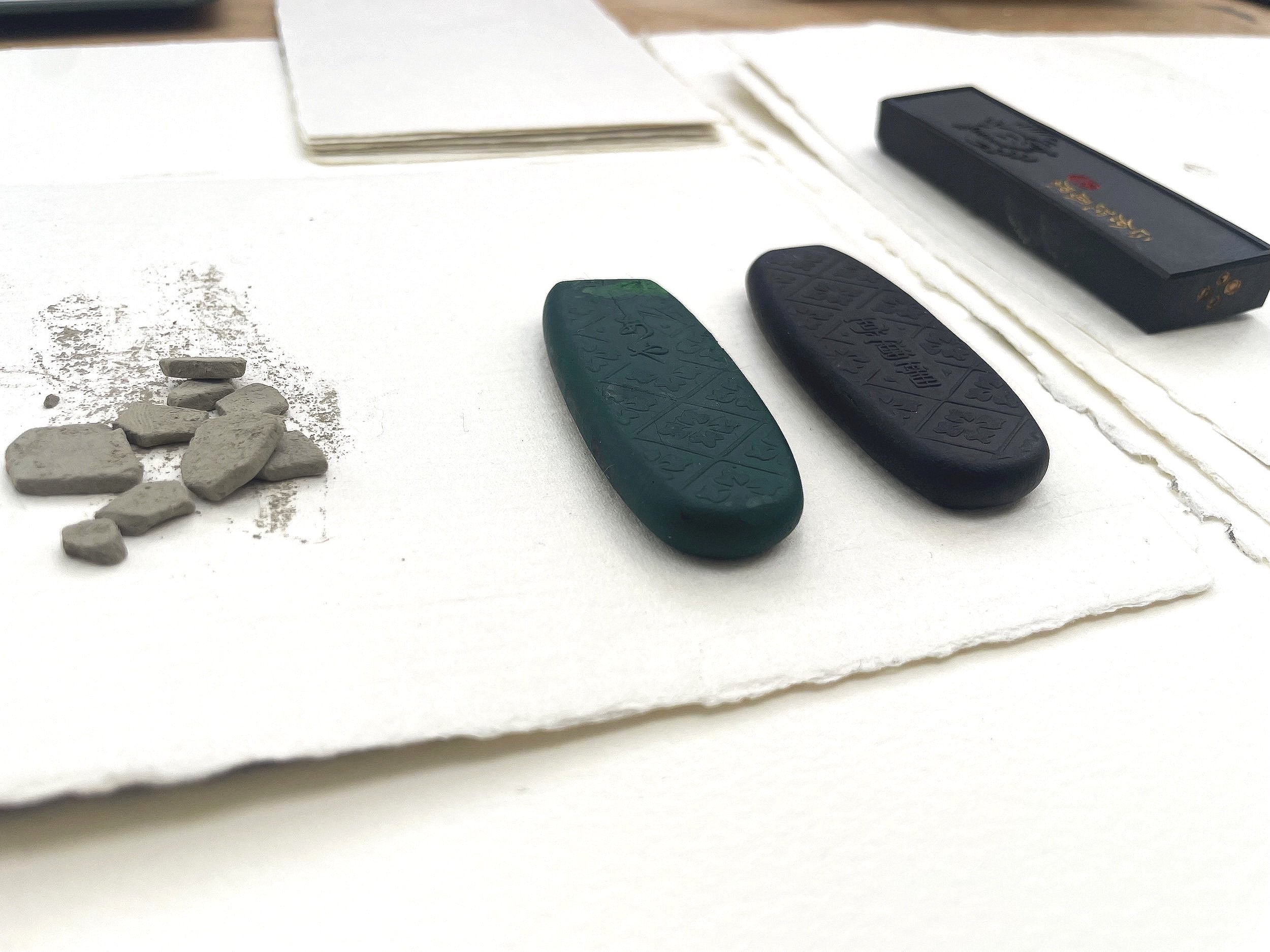about
an invitation to engage with the natural world
Vivienne Schadinsky is an artist and researcher whose work explores vulnerable natural ecosystems—plants, food crops, air quality, water systems, and soil health—through a lens of sustainability, science, and philosophy. A central dimension of her practice is hope: a rigorous, creative tool shaped by her studies at the University of Oxford on hopeful responses to climate change and on ethics and hope in a shifting climate. These studies deepened her engagement with environmental ethics and led to ongoing collaborations with ethicists and philosophers, including the development of public dialogues on climate ethics and hope. She invites collective thought, conversation, and reflection on the evolving role of art in our relationship with nature, focusing particularly on the impact of climate change and biodiversity loss.
Her practice begins with evidence from science and extends into art and philosophy. She collaborates closely with scientists, ethicists, and philosophers*, drawing on expertise from the Royal Botanic Gardens Kew, the Millennium Seed Bank in Wakehurst, the Natural History Museum, and universities worldwide. This network of advisors informs her long-term projects, which examine how climate change is reshaping food security, ecological systems, and our shared future.
Vivienne’s sustainable approach is visible in every aspect of her work. She carefully selects natural materials—traditional Japanese ink, paper, and brushes sourced directly from shokunin—the craftspeople in Japan—and experiments with soil pigments and minerals. Her primary medium is Japanese Sumi-e, which allows her to play between abstraction and representation, monochrome delicacy and dense tonal depth, embodying the evanescent quality of nature itself.
Her process unfolds in six interwoven stages:
Field & Collection – Observing nature first-hand, gathering data or specimens, and documenting growth forms, textures, and their interactions with the environment.
Research & Collaboration – Consulting botanists, ethicists, marine biologists and food security experts (see advisory board) on climate resilience and the future of edible species.
Material Experimentation – In the studio, she transforms her findings into layered compositions and explores the structural potential of natural materials.
Iteration & Reflection – Moving between notebooks, sketches, prototypes, and theoretical frameworks (ecology, food futures, climate science).
Environmental Storytelling & Engagement – Developing narratives through final ink paintings, paper sculptures, and filmmaking. Each project, once exhibited, can be accompanied by workshops on connecting with one’s immediate landscape through ink painting, and public talks or conversations with her scientific and philosophical advisors. Vivienne can also take on the full creative direction of a project, tailoring her research-driven processes to meet the specific goals of an organization or company.
Long View & Narrative – Developing ideas over months and years to expand public understanding and build new hybrid knowledge between art and science.
Across her projects Vivienne paints plants that may feed us in the future and envisions foods adapting to extreme climates. Her work asks: How can we shift away from a human-centric view? How can new perspectives redefine our way of life and guide our response to climate change?
She is also an educator, developing sustainable art curricula for children and running workshops, and speaking events for adults. Her multi-faceted practice spans painting, printmaking, sculpture, plant installations, publishing, and film making—pushing the boundaries of ecological art while weaving connections between people and place.
Vivienne’s work has been shown in solo exhibitions in Basel, London, and Manningtree, and in group exhibitions in London, Tokyo, and the Svalbard Global Seed Vault. Her artworks are held in private collections throughout the UK, Europe, and the US.
She is a member of the International Sumi-e Association in Tokyo.
Raised in Basel, Switzerland, Vivienne now lives and works in London.
Further Education & Professional Development
Vivienne has earned a certificate in how sustainability can be taught. And she completed courses on Creative and Hopeful Responses to Climate Change and on Philosophy and Ethics in the Context of Climate Change through the University of Oxford’s environmental education programs and plans to continue further studies at Oxford in these fields.
Awards
2025 Cultural Award for a Soya Bean Painting | Future Foods – through the International Sumi-e Association, Tokyo, and exhibited at the National Art Centre in Tokyo
*Arts and humanities can give us hope. Philosophy can remind us why life is worth living. It can connect us with our environment, inspire creativity and maybe offer some solace and the thoughts that make it all meaningful.
’What speaks to the soul, escapes our measurements’ — Alexander von Humboldt


